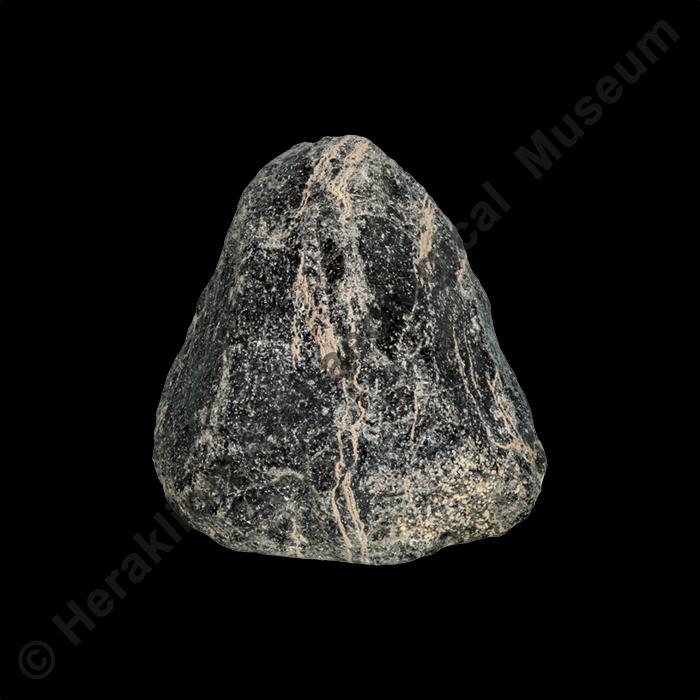Obsidian nodule from Nisyros
Λ6155
Obsidian
Max. Height: 41 cm. Max. Width: 39.5 cm.
Knossos
Palace
Late Bronze Age, Neopalatial period, Late Minoan IB period:
1500-1450 BC:
Gallery:
VCase:
50Exhibition thematic unit:
Late Bronze Age - Neopalatial period (1700-1450 BC). The New Palaces. The zenith of Minoan civilisationTrade and foreign contacts. Minoan Thalassocracy. International commerce and cultural influences
Description
Large nodule of raw obsidian from a deposit on the islet of Gyali near Nisyros. Its origin is evident with the naked eye, due to the white inclusions in the black volcanic glass. The raw material was removed from obsidian deposits in the form of small or large nodules, usually of an irregular polygonal shape, and exported for further processing. Once the natural outer layer was removed, the obsidian core was knapped to produce tools or vessels. This particular nodule was probably intended for a vessel, both due to its size and because Gyali obsidian is not the right consistency for tools. The discovery of obsidian nodules at sites of Minoan Crete is important evidence that vessels were made in situ by skilled artisans, and also attests to the existence of organised exchange networks supplying the raw material.Bibliography:
Mosso, A. Le Origini della Civilta Mediterranea. Milano, 1912, 285, fig. 180. Warren, P. Minoan Stone Vases. Cambridge Classical Studies, Cambridge, 1969, 136.Author:
I. N.Photographs' metadata
